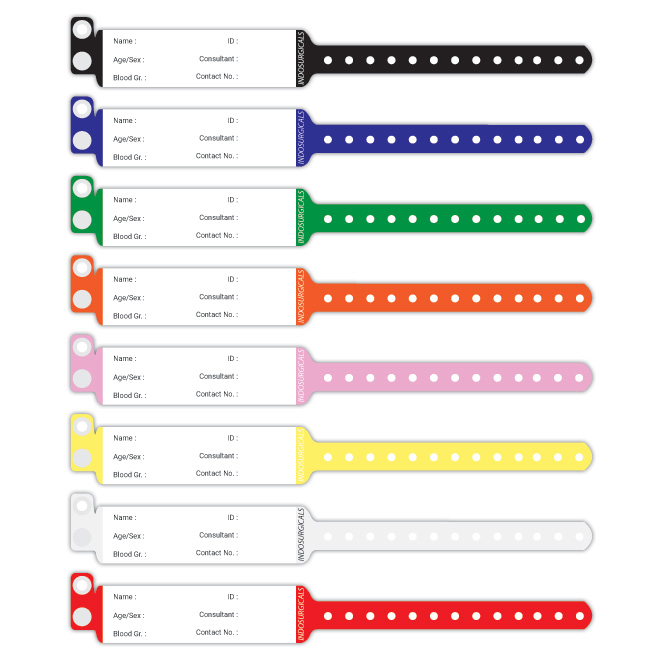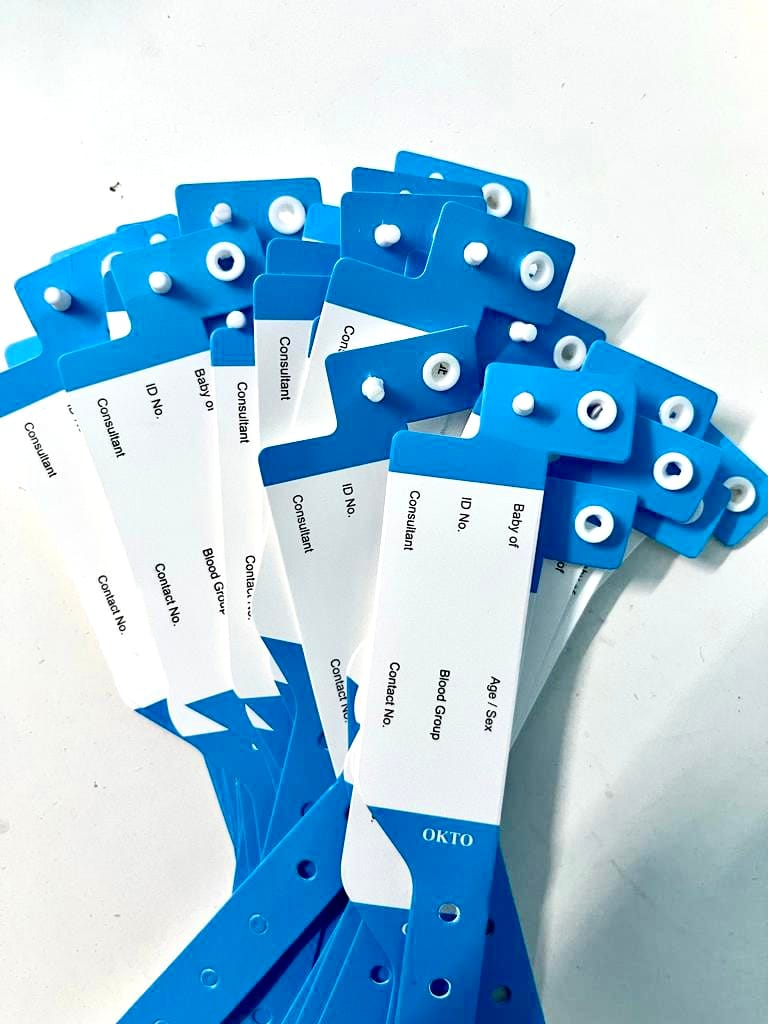How Patient Identification Band Boosts the Overall Patient Experience in Medical Facilities
How Patient Identification Band Boosts the Overall Patient Experience in Medical Facilities
Blog Article
Enhancing Client Care With Reliable Identification Bands
The application of reliable recognition bands is a crucial element in enhancing client care within health care setups. As the landscape of person identification develops, one should take into consideration the implications of these systems on total healthcare distribution and patient results.
Significance of Individual Recognition
Guaranteeing precise individual identification is important in healthcare setups, as it straight impacts the security and high quality of care offered. Misidentification can result in serious mistakes, consisting of providing the wrong medication, executing wrong treatments, or miscommunicating important client information. Such errors not just endanger client security but can likewise cause legal implications and reduced rely on health care systems.
Effective person recognition is fundamental to developing a safe and secure atmosphere where patients obtain proper and individualized treatment. It assists in the accurate documents of medical backgrounds, allergies, and therapy plans, making certain that doctor have access to crucial info at all times. Moreover, robust recognition procedures aid simplify communication among clinical staff, enhancing partnership and minimizing the danger of blunders.

Kinds Of Recognition Bands
Identification bands play an essential duty in maintaining precise person documents and enhancing safety and security within healthcare atmospheres. Numerous types of recognition bands are made use of to satisfy the certain demands and requirements of different individual populaces.

One more kind is the ankle band, which is specifically useful for infants and babies, making sure that identification continues to be intact also throughout treatment procedures. Specialized bands, such as those for allergy notifies or drop threat indicators, give additional layers of security by drawing prompt focus to vital client problems.
Lately, digital identification bands have gained popularity, incorporating barcodes or RFID modern technology that can be checked to swiftly retrieve individual information. These bands simplify process and lessen the danger of human error throughout person identification procedures.
Advantages of Reliable Recognition
Effective recognition of individuals with making use of recognition bands contributes significantly to overall individual safety and care high quality. By making certain that each person is properly recognized, doctor can efficiently match medical treatments and procedures to the correct person, reducing the threat of errors. This is particularly crucial in settings with high person turn over, where the potential for misidentification is higher.
Moreover, efficient identification bands enhance interaction amongst health care groups. Clear and exact patient recognition fosters partnership and makes certain that all group participants know a patient's certain requirements and case history. This interaction is essential for delivering collaborated treatment, especially in emergency situation circumstances where time is crucial.

Inevitably, reliable identification with the use of recognition bands not just safeguards individuals however also promotes a society of safety within healthcare centers (Patient Identification Band). By focusing on precise identification, health care companies can enhance end results and enhance the total individual experience
Carrying Out Recognition Equipments
While the value of individual identification is well acknowledged, the application of durable identification systems positions great site a facility difficulty for healthcare companies. Developing effective recognition systems requires a thorough method, encompassing innovation, workers training, and process integration.
First, companies must select suitable identification technologies, such as barcode scanning, RFID, or biometric systems. Patient Identification Band. These innovations should be evaluated based on expense, use, and compatibility with existing infrastructure. A pilot program can assist identify potential issues before full-scale execution
Following, detailed training for team is necessary. All employees have to recognize the value of exact patient recognition and be efficient in making use of the picked modern technologies. Regular training updates and assessments can strengthen best practices and make sure ongoing compliance.
Additionally, health care companies need to develop standardized treatments for patient identification across all divisions, decreasing disparities and enhancing interaction. Regular audits can help identify gaps in adherence to these procedures.

Ultimately, an effective implementation of recognition systems not just improves individual security however likewise fosters a culture of accountability and diligence within healthcare settings, guaranteeing reputable and constant person care.
Future Trends in Person Recognition
Improvements in modern technology are established to reinvent client identification techniques in health care settings. The assimilation of biometric recognition techniques, such as fingerprinting and facial acknowledgment, is anticipated to enhance precision and protection. These technologies can significantly reduce the danger of misidentification, making sure that clients receive the correct therapies and medications.
In addition, the application of blockchain technology for person records is obtaining traction. This decentralized approach can supply a protected and tamper-proof technique for managing individual identities, therefore enhancing access to important information throughout different doctor.
Another fad is the boosting use of i thought about this mobile health applications that take advantage of QR codes for client identification. These applications permit for real-time updates and simple access to client information, encouraging click healthcare experts to make educated choices quickly.
In addition, expert system (AI) is positioned to play an essential function in examining person recognition information, recognizing patterns, and predicting possible identification mistakes prior to they take place.
As these technologies advance, they promise not only to boost patient security yet additionally to boost the general performance of medical care shipment systems. Embracing these innovations will certainly be essential for future-proofing client treatment methods.
Conclusion
Finally, effective recognition bands are vital for enhancing client safety and security and care quality within healthcare settings. By minimizing the threats linked with misidentification, these bands help with accurate and timely details retrieval, ultimately boosting communication among health care carriers. The execution of durable identification systems not just cultivates a culture of security yet likewise settings health care institutions to adjust to future trends in person identification technology, ensuring optimal results for people in varied professional environments.
As the landscape of client identification develops, one have to think about the implications of these systems on general health care distribution and person outcomes.Reliable patient identification is essential to establishing a protected environment where patients receive proper and tailored treatment. Ultimately, prioritizing effective person recognition strategies not just promotes a society of safety and security however likewise adds to boosted client results and overall contentment with health care solutions.
Reliable identification of people through the use of identification bands contributes substantially to total person security and care quality. The application of robust recognition systems not just promotes a culture of safety and security however also positions medical care institutions to adapt to future fads in individual recognition technology, making sure optimal outcomes for individuals in diverse professional settings.
Report this page